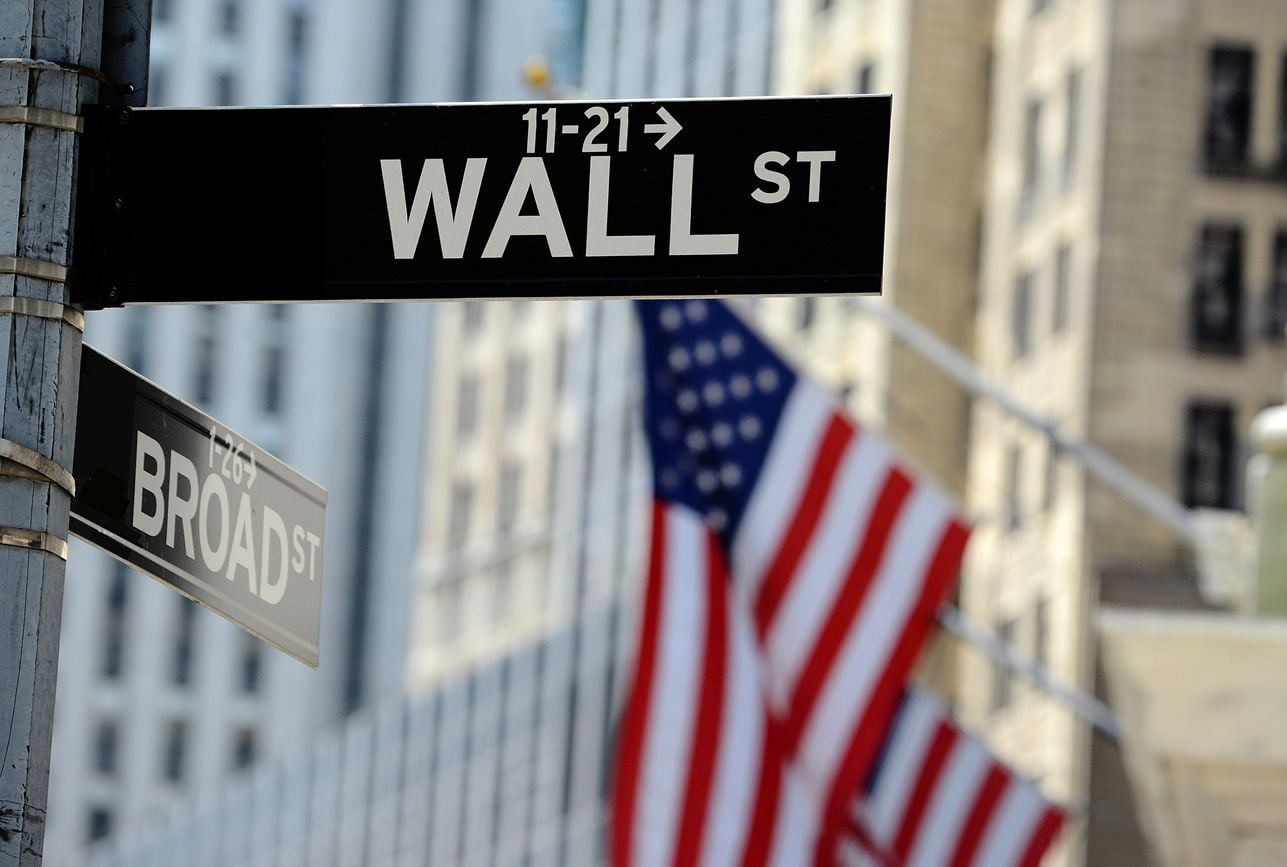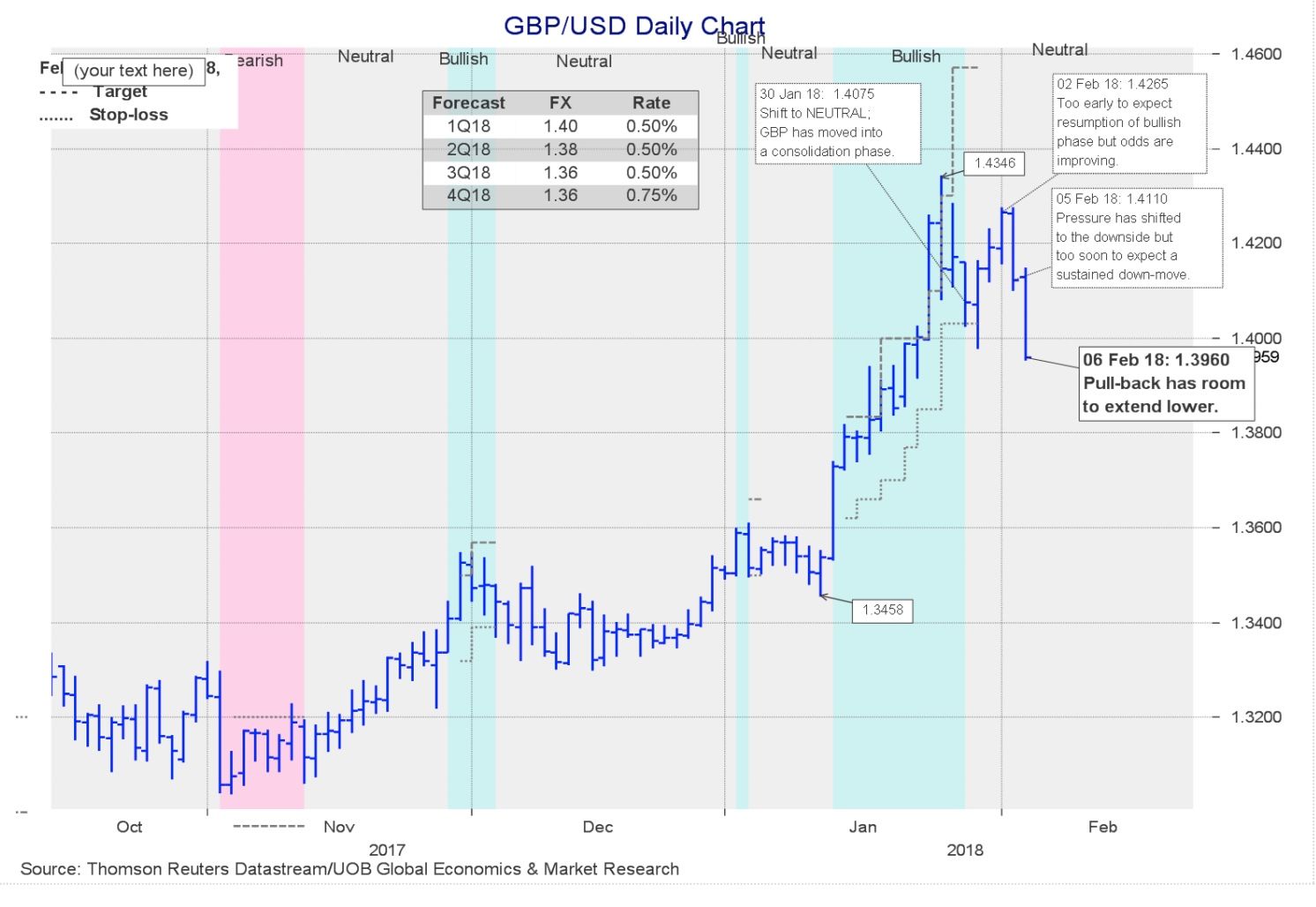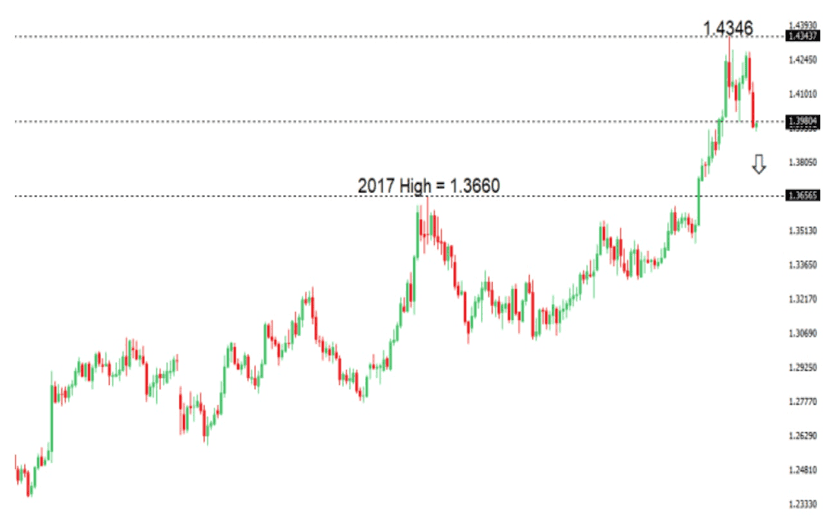The Pound's Decline Against Dollar at Risk of Extending Short-Term

Above: The Dollar rose while global stocks took a pounding. © Robert Cicchetti, Adobe Stock
The Pound-to-Dollar exchange rate broke below 1.40 at the start of the new week and looks in danger of suffering further near-term declines while longer-term some commentators remain optimistic.
The GBP/USD exchange rate has over the course of the past 24 hours slid below that psychologically significant 1.40 level; at the time of writing the sell-off has extended to 1.3885 which represents a deeper level than many commentators had anticipated.
The declines are partly thanks to a broad-based rise in the value of the Dollar which come amidst an environment of heavy stock market selling and rising US treasury bond yields; the Dollar often enjoys the status of a safe-haven when markets turn nurvous.
Certainly, looking ahead, the fate of the Dollar will be crucial to the performance of GBP/USD and therefore to other key Sterling-based exchange rates as the headline GBP/USD often plays a role in moves elsewhere.
Sterling meanwhile faces an event-heavy week and some analysts reckon the more pragmatic currency traders are reducing their exposure to the UK currency as a result.
"Looks like it'll be a noisy week for the Pound given that you have crunch Brexit talks on top of the Bank of England meeting. Feels like today's fall in GBP may be a bit of de-risking," says analyst Viraj Patel with ING Bank in London.
For Sterling much will depend on the tone of the Bank of England meeting and changes to the Bank's economic forecasts that will be released in the accompanying Inflation Report.
"We are highly doubtful that the BoE will issue a hawkish signal this week, so there is vulnerability in Sterling to the BoE events in our view," warns Alvin Tan at Société Générale. "Our technical analysts note that cable has formed a bearish engulfing pattern against the upside projections at 1.4270/1.4345, and the risks are skewed to the downside in the near-term."
Indeed, from a technical perspective, what is apparent is the GBP/USD exchange rate near-term outlook has turned from positive to negative.
"While we anticipated a lower GBP yesterday, the pace and extent of the drop way exceeded our expectation. The major support levels at 1.4040 and 1.3980 were easily taken out as GBP crashed to an overnight low of 1.3953," says Quek Ser Leang with UOB in Singapore.
Leang says he is yet to see signs of stabilisation just yet and the current decline could extend to 1.3900 (with lower odds of further extension to 1.3855).
"Only a move back above 1.4050 would indicate that the weakness has stabilised (minor resistance is at 1.4000)," says the analyst.
Analyst Joel Kruger with LMAX Exchange is also of the opinion that near-term Sterling should struggle against the Dollar.
"Daily studies are in the process of unwinding from overbought levels. This in conjunction with the market reaching the measured move extension objective following the breakout above 1.3660, warns of either a period of consolidation with limited upside, or deeper setbacks over the coming sessions," says Kruger in a currency briefing released on the morning of February 6.
Graphic (C) Lmax Exchange
However, those with eyes on the longer-term game, Sterling is seen as merely moving lower within a broader uptrend that has been in place for some months now.
"The response of GBP prices to resistance above 1.4300 looks corrective in broad terms but additional reaction or at least re consolidation is nonetheless envisaged before broader uptrends resume," says Lucy Lillicrap, an analyst with currency brokerage AFEX.
Therefore, it could be a case of short-term pain, longer-term, gain.
"Look through this noise - events this week unlikely to alter GBP fundamentals," says ING's Patel.
Advertisement
Get up to 5% more foreign exchange by using a specialist provider to get closer to the real market rate and avoid the gaping spreads charged by your bank when providing currency. Learn more here.






